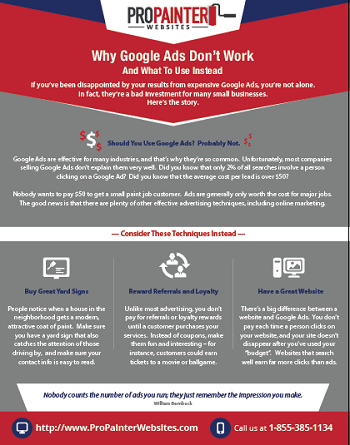Understand How Seasonal Conditions Affect The Success Of Business Outside Painting And Learn The Ideal Durations To Assure Resilient Results For Your Job
Understand How Seasonal Conditions Affect The Success Of Business Outside Painting And Learn The Ideal Durations To Assure Resilient Results For Your Job
Blog Article
interior line painting By-Carlson Decker
When you're preparing a business external paint task, seasonal elements can make or damage your outcomes. You'll want to consider just how temperature and humidity influence paint application and drying times. Choosing the ideal period can guarantee your paint adheres effectively and lasts longer. However which periods are genuinely the most effective for this type of work? Let's explore the key elements that can impact your job's success.
The Influence of Temperature Level on Paint Application
When you're intending an industrial external paint task, the temperature can substantially affect exactly how well the paint adheres and dries.
Preferably, you want to paint when temperatures range between 50 ° F and 85 ° F. If exterior residential painting 's too cold, the paint may not treat properly, bring about issues like peeling or cracking.
On the other side, if it's too hot, the paint can dry out also quickly, preventing correct bond and causing an irregular coating.
You need to likewise take into consideration the time of day; early morning or late afternoon offers cooler temperature levels, which can be more favorable.
Constantly check the producer's suggestions for the particular paint you're using, as they commonly supply assistance on the ideal temperature level variety for optimum outcomes.
Moisture and Its Impact on Drying Times
Temperature level isn't the only ecological aspect that influences your commercial outside paint job; humidity plays a considerable function also. High humidity levels can decrease drying times dramatically, influencing the general top quality of your paint task.
When the air is saturated with moisture, the paint takes longer to heal, which can cause concerns like bad attachment and a greater risk of mildew development. If you're repainting on a particularly damp day, be prepared for extended wait times in between coats.
It's critical to keep an eye on regional weather conditions and strategy accordingly. Preferably, aim for humidity levels in between 40% and 70% for ideal drying.
Maintaining these consider mind guarantees your job stays on track and supplies a long lasting surface.
Best Seasons for Commercial Outside Painting Projects
What's the best season for your industrial outside paint jobs?
Spring and very early loss are usually your best choices. Throughout these seasons, temperatures are light, and moisture levels are typically lower, developing suitable problems for paint application and drying.
Stay clear of summer's intense heat, which can trigger paint to dry too swiftly, resulting in poor attachment and surface. Similarly, winter months's chilly temperatures can prevent appropriate drying out and curing, taking the chance of the longevity of your paint job.
Aim for days with temperatures in between 50 ° F and 85 ° F for optimum results. Keep in mind to inspect the local weather forecast for rain, as wet conditions can spoil your job.
Planning around these elements guarantees your paint task runs efficiently and lasts much longer.
Verdict
Finally, preparing your commercial external painting projects around seasonal factors to consider can make a significant difference in the outcome. By organizing stucco painting company golden valley throughout the ideal temperature levels and moisture levels, you'll guarantee much better attachment and drying times. Keep in mind to keep an eye on regional weather prediction and pick the correct time of year-- spring and early loss are your best bets. Taking these actions will aid you achieve a resilient and professional surface that lasts.
